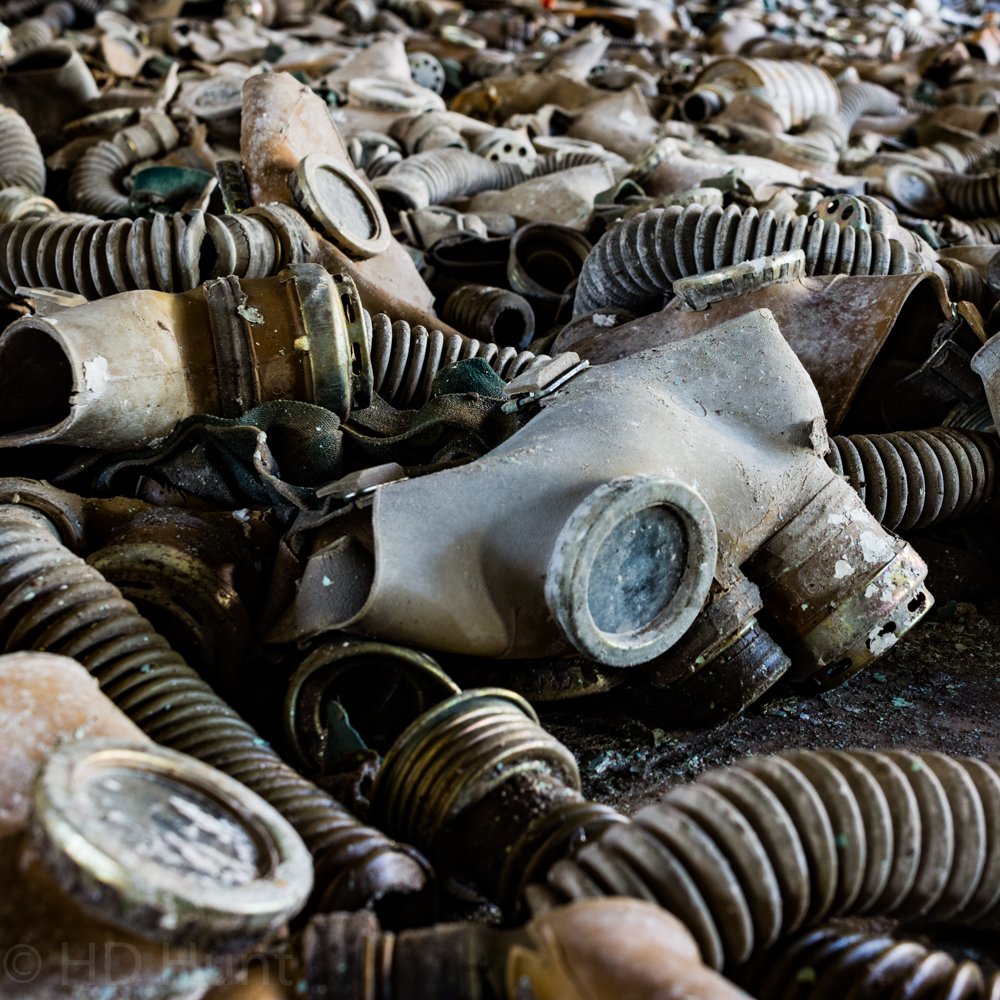Pripyat / Prypiat (Part Two)
Day Two - Chernobyl / Chornobyl & Kyiv - 2016
A walk through central Pripyat / Prypiat, passing by many leisure-focused locales such as the movie theater, hotel, Palace of Culture, and now-famous amusement park.
Editor’s Comment: When I first posted this travelogue, I used Russian-to-English transliterations for place names. However, subsequent events -namely the 2019 adoption of Ukrainian-derived places names by the U.S. Board of Geographic Names and the 2022 Russian invasion of Ukraine- have subsequently compelled me to update this travelogue. Broadly speaking, place names associated with the 1986 nuclear accident will have both versions listed; prominent structures (such as the Chernobyl Nuclear Power Plant or Pripyat Hospital) will continue to use their now-popularized 1986 names, as will instances where these locations are referenced metonymically (“traveled to Chernobyl,” for example); locations not directly associated with the 1986 disaster (primarily, Kyiv) will use modern Ukrainian-derived nomenclature; and, maps and URLs will continue use names from the original post until such a time as I can update them.
Map Credit: OpenStreetMap
1. Prometheus Movie Theater #1
Prometheus was chosen to symbolize the ambition of Pripyat / Prypiat, and the city’s movie theater was named after the mythological figure.
A short walk away from Café Pripyat is the Prometheus Movie Theater. It is worth a quick visit, but -fair warning- the interior of the theater is very dark and most of the floorboards of the risers are rotted and slippery.
Another photograph of Prometheus follows.
2. Prometheus Movie Theater #2
3. Animals of the Exclusion Zone
A dog enjoys the mid-day sun in Pripyat / Prypiat.
Outside the Prometheus Movie Theater, we encountered this dog; certainly not the first dog we had come across on our travels in the Exclusion Zone, but this one was the most friendly and certainly knew how to get food from visitors. Despite the best efforts of the Soviet government after the accident to ensure pets wouldn’t live in such a toxic place, dogs in particular seem to thrive here. If and when you come across one on your visit, your tour guide will repeatedly insist you not touch these animals as they have free reign throughout the area and could potentially be contaminated.
4. Music School
The piano in the main auditorium of Pripyat’s Music School has become one of the enduring symbols of the city’s abandonment.
Much like the Movie Theater, the adjacent Music School is worth a quick peak. Almost all of the rooms are empty, so I recommend moving immediately to the main auditorium. A person in my group was a piano player, and I am happy to report the piano still works - kind of. Anyway, give it a try if you feel up to it.
5. Pripyat City Administration Building
The atomic symbol on the city hall’s facade was placed there after the 1986 accident, when the building was repurposed to house a commission concerned with decontamination.
After departing the music school, we passed alongside the City Administration Building. This, naturally, would have housed all the city’s government buildings - to include the city’s KGB office, presumably on the top floor. We were instructed this building was nearly empty and we decided to move on.
6. A Look Down Kurchatova Street
Pripyat’s / Prypiat’s main street, Kurchatova Street was once a broad divided boulevard filled with hundreds of rose bushes.
Walking past the City Administration, we were entering the center core of Pripyat / Prypiat. What was once a proud example of Soviet city planning is now being reclaimed by nature.
7. Hotel Polissya
The six-story Hotel Polissya was built to accommodate visitors to the Chernobyl Nuclear Power Plant.
We passed by the Hotel Polissya, one of the most iconic buildings in Pripyat / Prypiat. The roof of the building used to be a common place for guides to bring tourists to get a panorama of the city; however, accessing the roof is no longer deemed safe and we passed by the building without entering.
8. The Voskhod Building
The Voskhod Building (at left) features the infamous hammer-and-sickle emblem which looks down across Pripyat / Prypiat.
Three buildings we did not visit appear above - from left to right, the Voskhod Building, the supermarket, and the center square’s restaurant.
9. Palace of Culture Energetik #1
The Palace of Culture Energetik was -like all Soviet Palaces of Culture- an indoor center of arts and recreation. Pripyat’s building featured a library, gymnasium, theater, and swimming pool.
We next had free time to explore the Palace of Culture Energetik. When walking in, you are greeted by this still very vibrant mural, although one has to wonder how much longer it will last in its current condition. Several floors of leisure activity spaces await you, and I recommend taking some time to visit each space as they are all unique.
Two more photographs of the Palace of Culture follow.
10. Palace of Culture Energetik #2
11. Palace of Culture Energetik #3
Enjoying what you’re seeing?
Consider a follow on Instagram.
Now back to the travelogue!
12. Park of Culture & Rest #1
Despite not being scheduled to open until 1 May 1986, the Park of Culture and Rest -better known now as the Amusement Park- has nonetheless become a symbol of Pripyat / Prypiat in the wake of the 26 April 1986 Chernobyl disaster.
Behind the Palace of Culture lies the famous Pripyat Amusement Park. The center attraction is the gigantic ferris wheel, but the park also has bumper cars, swing boats, and a paratrooper ride. Scheduled to open five days after the disaster, the amusement park never saw regular use; in fact, many of the rides weren’t yet fully completed. Nonetheless, it is believed that the ferris wheel opened for a brief period sometime before the evacuation of Pripyat / Prypiat began in the afternoon of 27 April.
Eight additional photographs of the amusement park follow.





